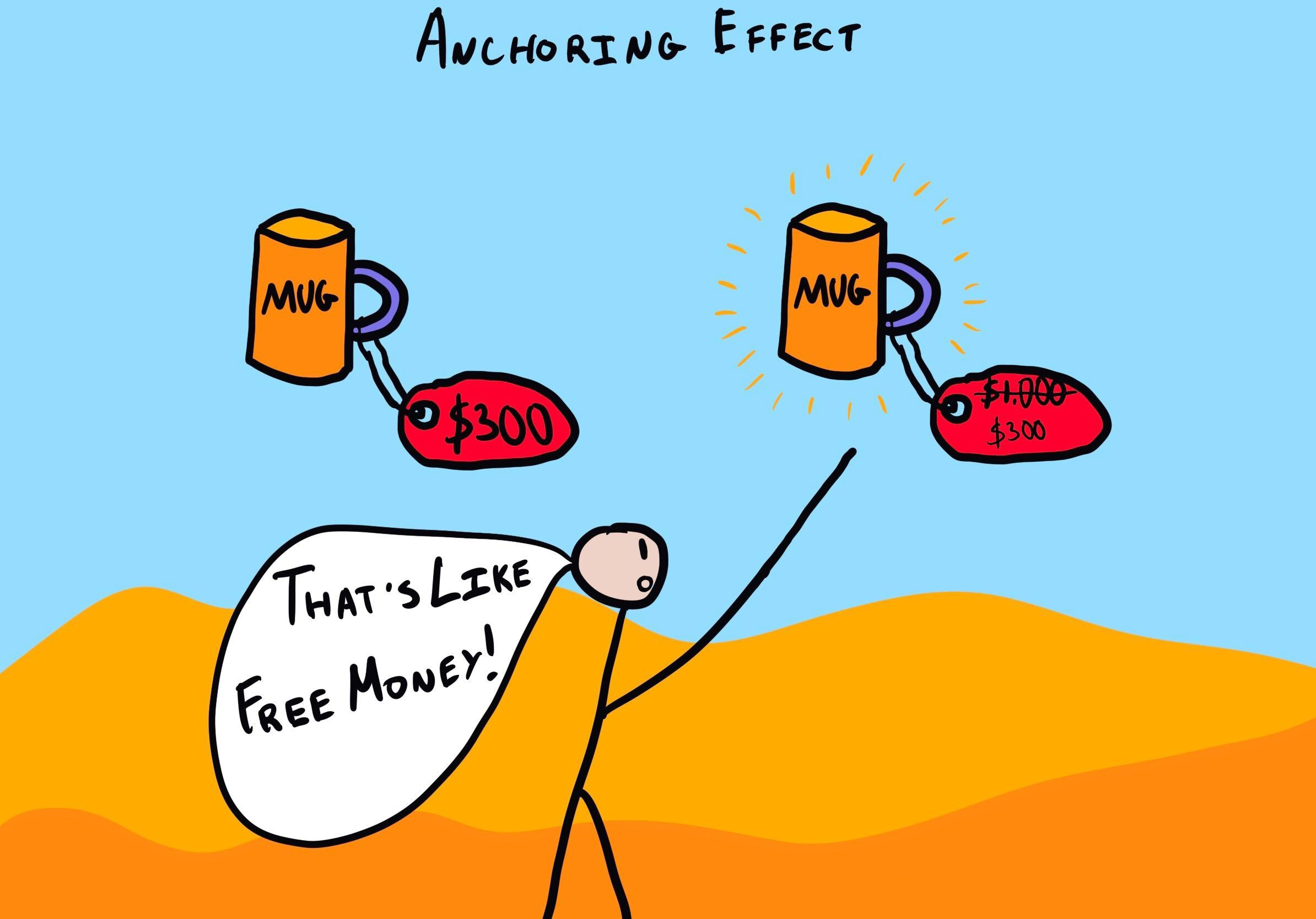Anchoring bias is a cognitive bias that influences the way we make decisions and estimates. It occurs when individuals rely too heavily on the first piece of information they encounter (the “anchor”) when making decisions, even if that information is irrelevant or arbitrary. This initial piece of information acts as a reference point, which then skews subsequent judgments.
Explanations:
The anchoring bias is closely related to the idea that human decision-making often follows the path of least cognitive effort. Instead of making entirely independent judgments, people tend to use the anchor as a shortcut to streamline their decision-making process.
Examples:
Pricing: When buying a new car, a salesperson may initially offer a price that is higher than the actual value of the car. This high anchor price can lead the buyer to perceive the actual price (even if it’s still high) as a reasonable deal in comparison.
Negotiations: In negotiations, starting with an extreme initial offer can anchor the subsequent negotiations in favor of the person who set the initial terms. For example, setting a high price for a used item might result in a final price that is still higher than its true value.
Discounts: Retailers often use anchoring by showing a “regular” price crossed out next to the sale price. Consumers are more likely to perceive the sale price as a great deal, even if the original “regular” price was inflated.
Solutions:
Awareness: Recognizing that anchoring bias exists is the first step. Be mindful of the initial information presented in a decision context and its potential influence on your judgment.
Question the Anchor: Always consider whether the anchor is relevant or arbitrary. Ask yourself why a particular number or piece of information is being presented and whether it should genuinely influence your decision.
Generate Multiple Anchors: Try to establish multiple reference points before making a decision. This can help balance the influence of any one anchor and lead to more rational choices.
Use Objective Data: When possible, rely on objective, independently gathered information rather than subjective or arbitrary anchors. This can reduce the impact of the bias.
By being aware of anchoring bias and actively working to mitigate its effects, you can make more rational and informed decisions.
